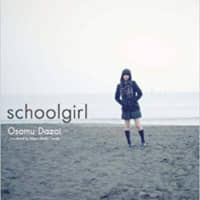Published in 1939, "Schoolgirl" established Osamu Dazai's career as a writer. Later novels such as "No Longer Human" and "The Setting Sun" would turn him into a literary celebrity, but in "Schoolgirl" we find Dazai exploring the same preoccupations in a lighter palette, his particular worldview finding expression through the interior monologue of an awkward teenage girl.
Schoolgirl, by Osamu Dazai, Translated by Allison Markin Powell.
100 pages
ONE PEACE BOOKS, Fiction.
Taking place over the course of a single day, "Schoolgirl" exhibits Dazai's insight and flair for depicting the inner workings of human consciousness. Allison Markin Powell's translation renders the narration lively and idiosyncratic, the schoolgirl's thoughts flitting from childish outbursts to somber meditations on existence with a lightness of touch that is natural and engaging.
Through the constantly shifting lens of the narrator's thoughts, we witness the passing of an ordinary day in prewar Japan. The few trivial moments of the schoolgirl's life we are privy to — riding the train to school, a trip to a hair salon, cooking an evening meal — amount to a vivid evocation of a Japan now lost to the past, a world at once recognizable yet strange, close to our own time yet out of reach.
Concise enough to be read in one sitting, "Schoolgirl" combines Dazai's familiar themes of melancholy, alienation and despair with levity and humor, the contradictions of the teenage narrator's thoughts drawing us into a tale whose lightness and uncertainty are virtues.
Read archived reviews of Japanese classics at jtimes.jp/essential.

















With your current subscription plan you can comment on stories. However, before writing your first comment, please create a display name in the Profile section of your subscriber account page.